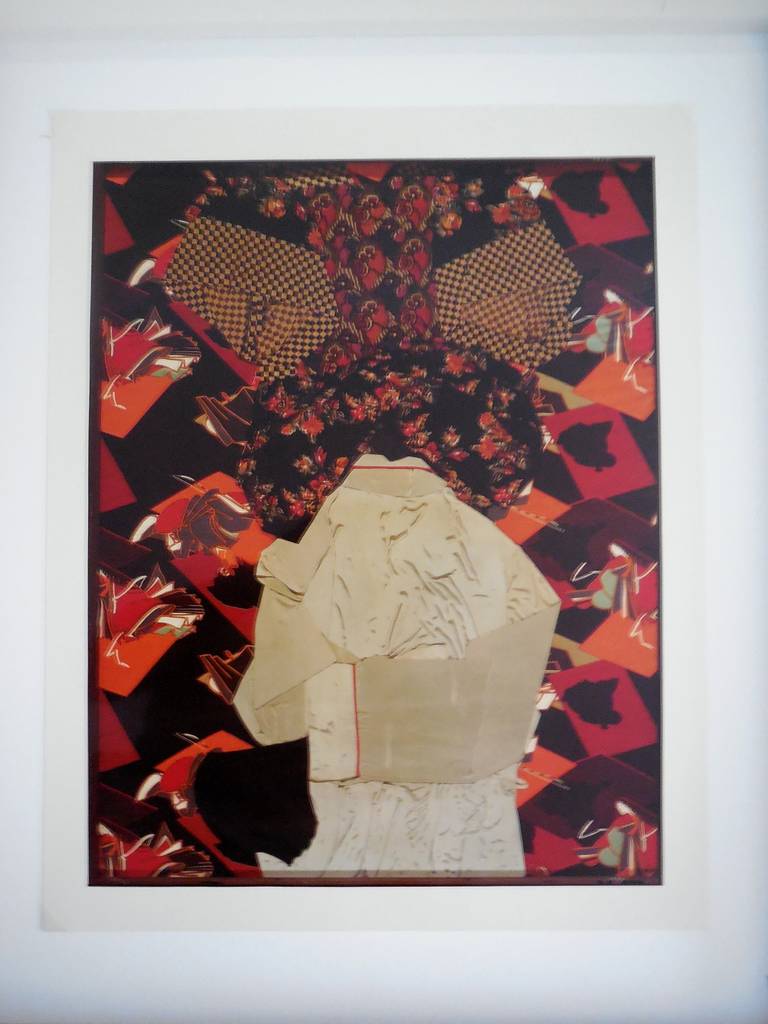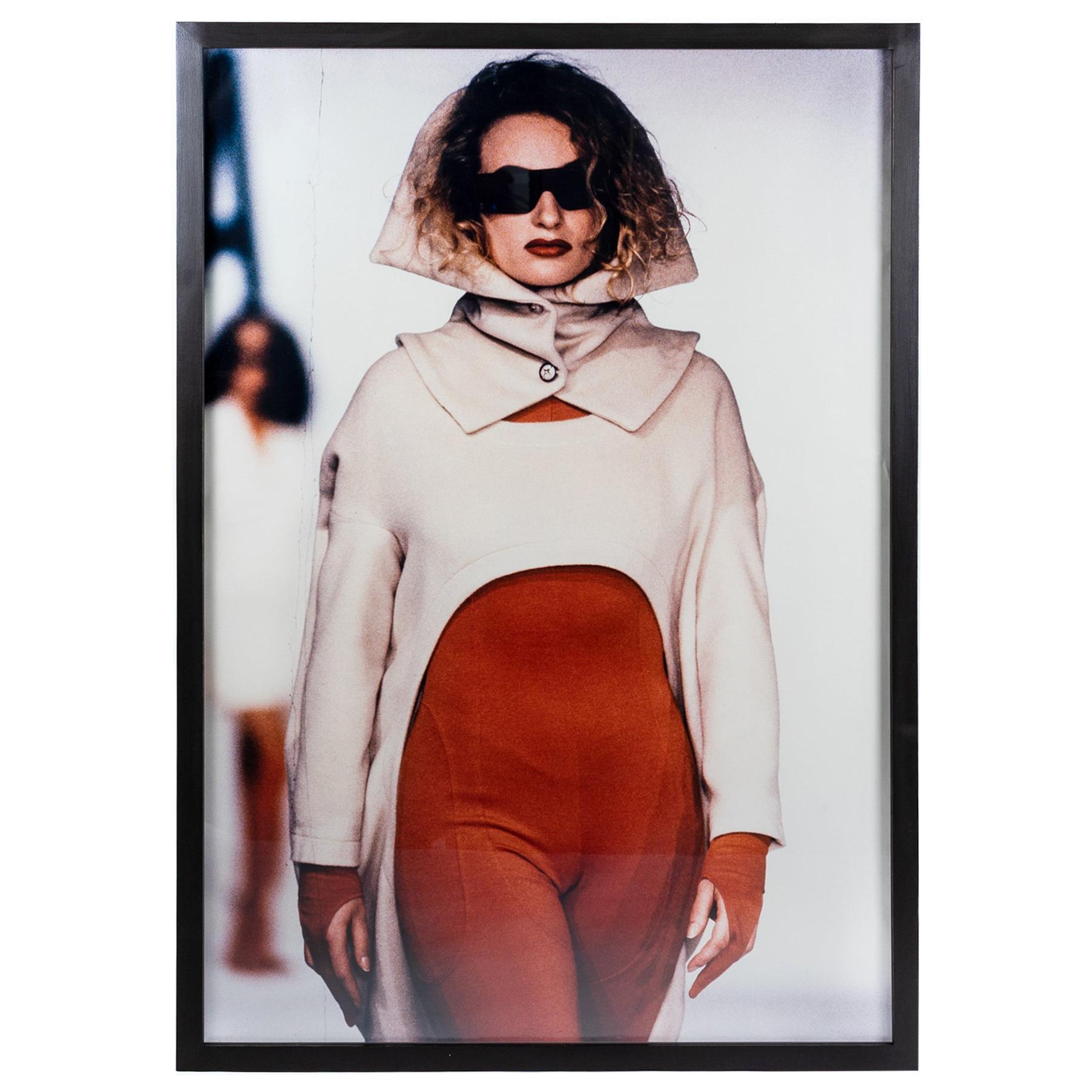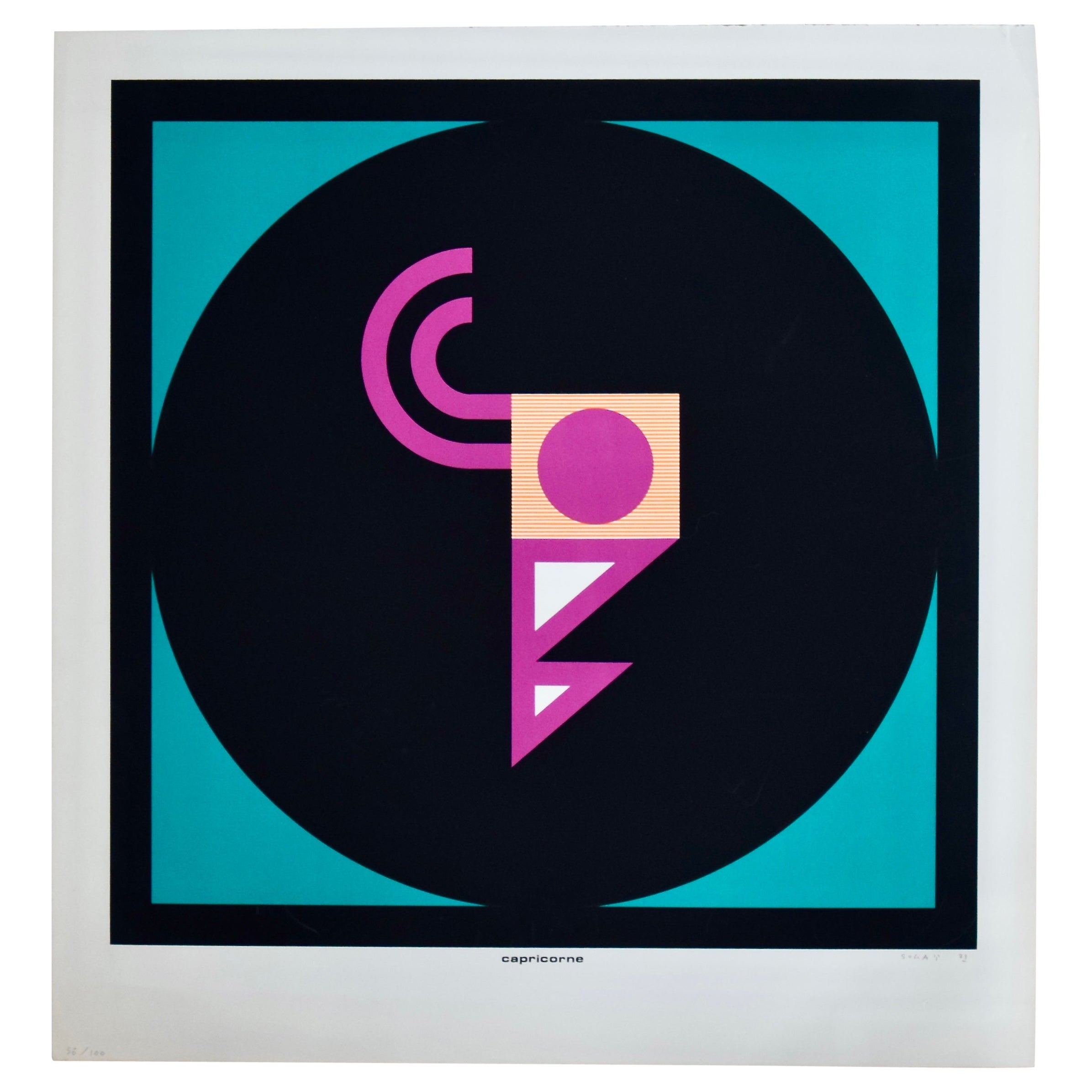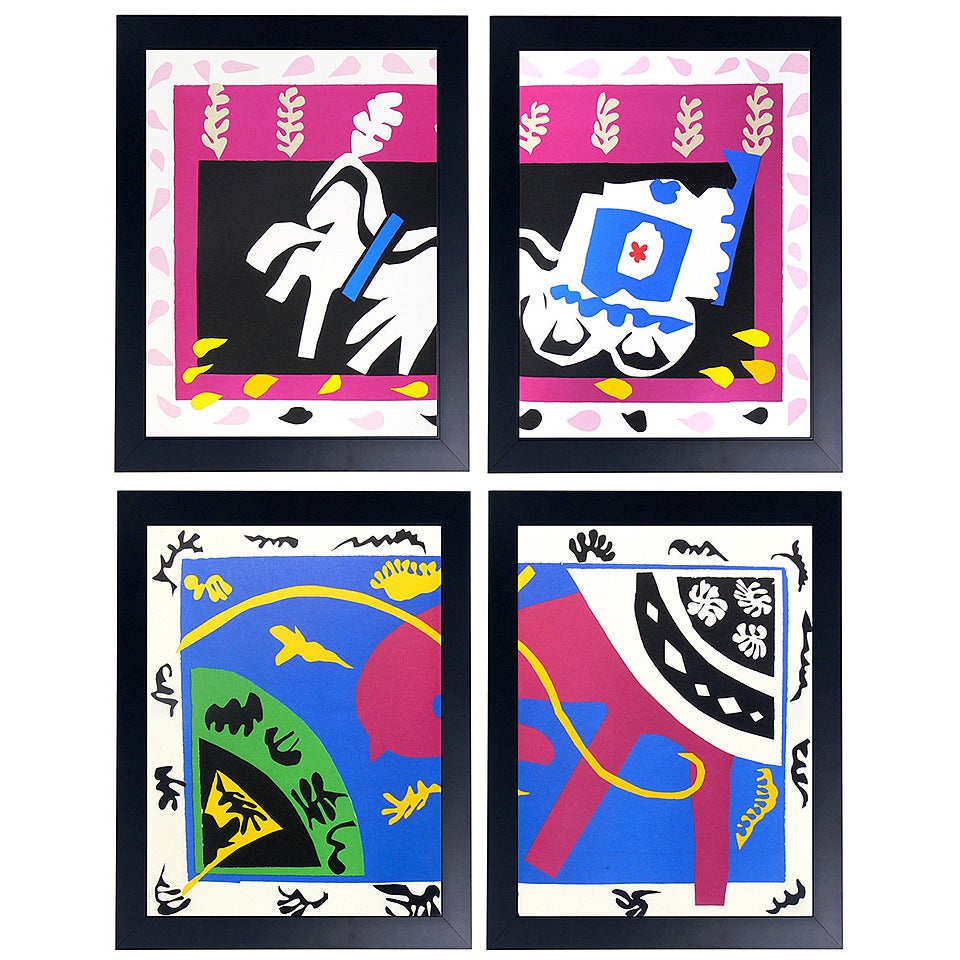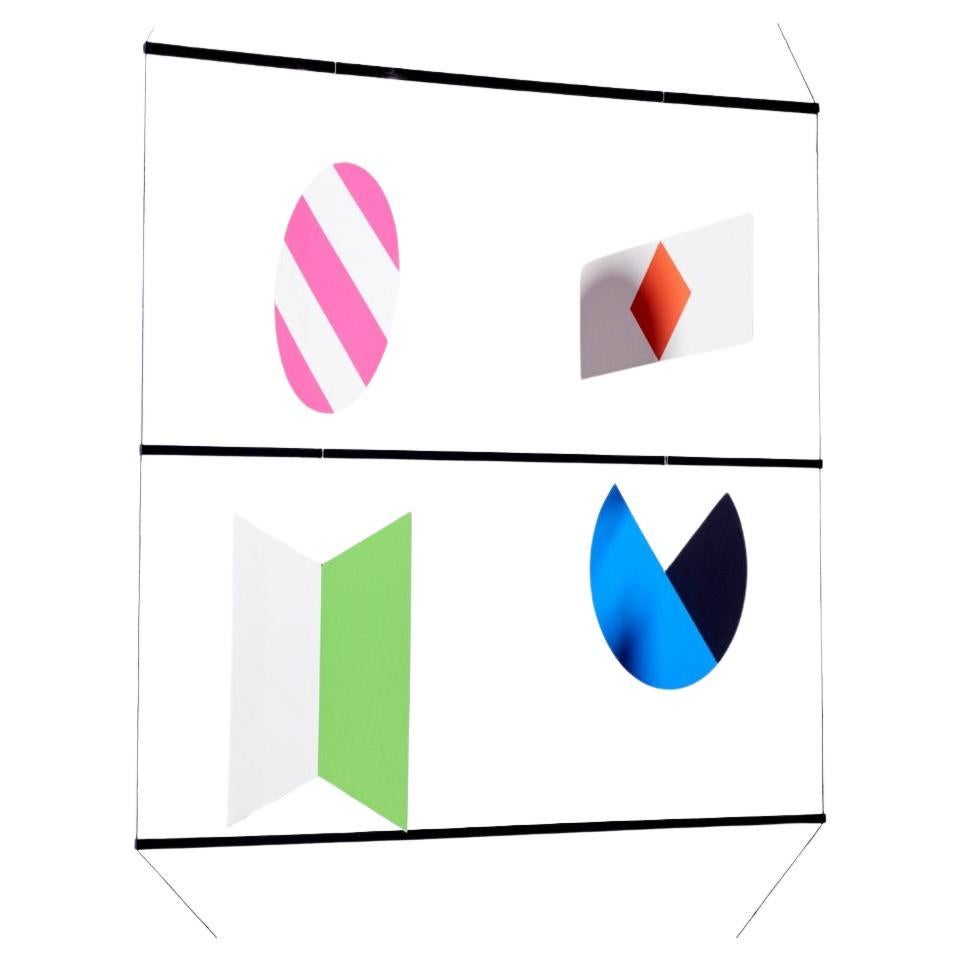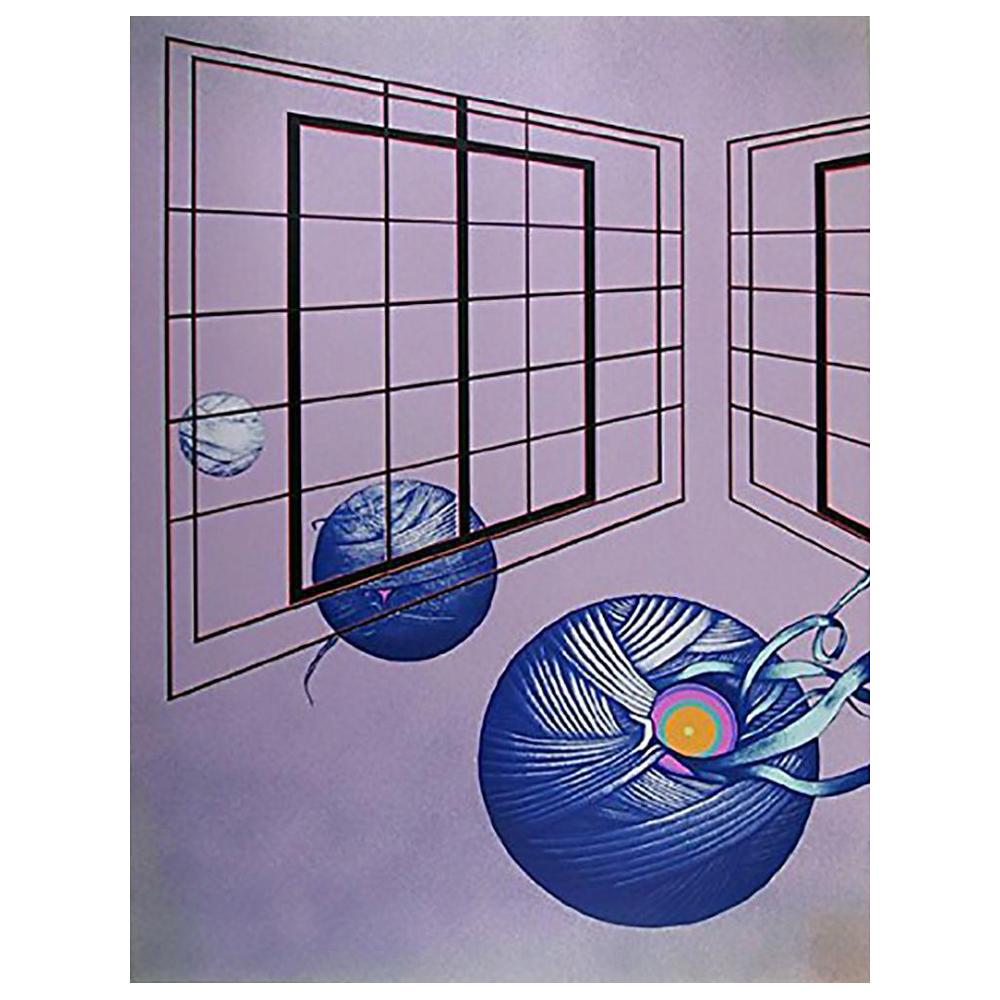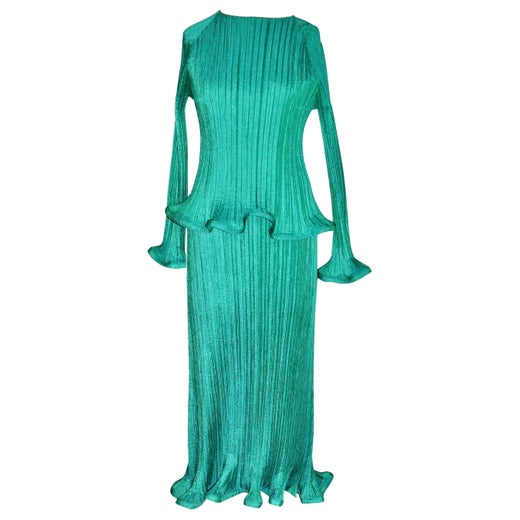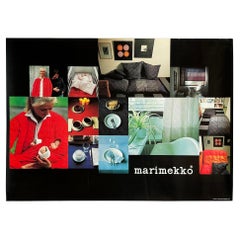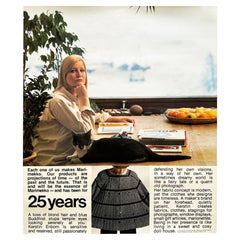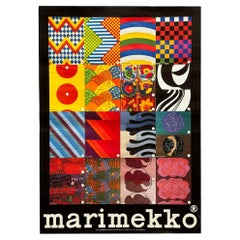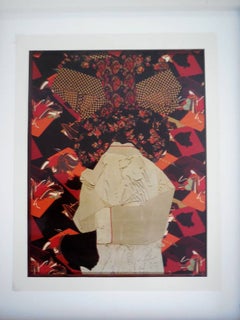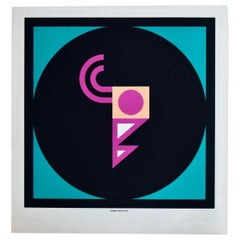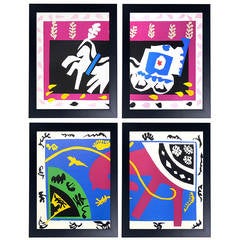Issey Miyake Magazine Spread by Laurie Rosenwald for Vogue
About the Item
- Creator:Issey Miyake (Fashion House)
- Dimensions:Height: 0.25 in (6.35 mm)Width: 28 in (71.12 cm)Depth: 19 in (48.26 cm)
- Style:Post-Modern (Of the Period)
- Materials and Techniques:
- Period:
- Date of Manufacture:circa 1980
- Condition:Additions or alterations made to the original: two Rosenwald-designed spreads from an issue of Vogue placed back-to-to back with a black border and laminated. Wear consistent with age and use.
- Seller Location:Brooklyn, NY
- Reference Number:1stDibs: LU1546226866722
Issey Miyake
From the prismatic Pleats Please collection to the modular, three-dimensional garments crafted from recycled plastic bottles in his Reality Lab, the captivating fashions by Japanese designer Issey Miyake are all about movement.
Born in Hiroshima, Miyake studied graphic design at Tama Art University in Tokyo before relocating to Paris in 1965, where he studied couture and cut his teeth working for Guy Laroche and Hubert de Givenchy. In 1969, he moved to New York, where he worked for Geoffrey Beene. He returned to Tokyo in 1970 to found his first solo venture, the Miyake Design Studio. It wasn’t until the 1990s, though, that the designer had his breakthrough moment with experimentations in pleating. Some of his earliest explorations were for choreographer William Forsythe’s Frankfurt Ballet Company, with the 1991 performance of The Loss of Small Detail featuring costumes Miyake designed with pleats that complemented and transformed the movement of the dancers.
Though long a staple in couture — from delicate women’s skirts to men’s suit pants — pleats took on new life in Miyake’s hands. By using a heat press to cure his fabrics after his garments are stitched, Miyake was able to maintain the accordion structure of the pleat, turning a series of folds into sculptural, often futuristic forms unbound by the shape of the human body. In 1993, Miyake debuted “garment pleating” in his Pleats Please line, in which the clothes are constructed at a size that is larger than what is intended for the finished product. The pleats are then created — a process that involves folding and ironing and is separate from the joining of seams — and individual pieces are subsequently hand-fed into a heat press. The pleats are permanent and the garments can be worn and washed without losing their shape.
Miyake’s pleats run the gamut in scale, which enabled him to evoke dramatic, sharp silhouettes and flowy movements in equal measure. In essence, he created an entirely new material whose iterations are infinite — a feat of technology as much as fashion.
Other innovations include Miyake’s 1997 Just Before collection, which introduced a series of tube-knit dresses that could be cut as desired, reducing both work and resources. His Reality Lab now investigates new materials, such as a fully recycled polyester. Miyake’s prowess, in fact, captured another iconic figure in the tech world: Steve Jobs, for whom the designer made hundreds of identical black turtlenecks, the late Apple founder’s sartorial signature.
Find a collection of vintage Issey Miyake day dresses, jackets, shirts and other clothing on 1stDibs.
- ShippingRetrieving quote...Shipping from: Brooklyn, NY
- Return Policy
More From This Seller
View AllMid-20th Century Scandinavian Modern Posters
Paper
Late 20th Century Scandinavian Modern Posters
Paper
Late 20th Century Scandinavian Modern Posters
Paper
Late 20th Century Scandinavian Modern Posters
Paper
Late 20th Century Post-Modern Posters
Paper
Late 20th Century Mid-Century Modern Prints
Paper
You May Also Like
1980s 85 New Wave Photography
C Print
Vintage 1980s German Modern Photography
Glass, Wood, Paper
Vintage 1970s Japanese Mid-Century Modern Prints
Paper
Vintage 1980s American Mid-Century Modern Prints
Paper, Wood
Vintage 1980s Italian Kinetic Contemporary Art
Metal
Vintage 1970s American Modern Prints
Paper
